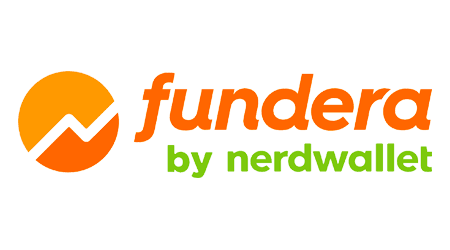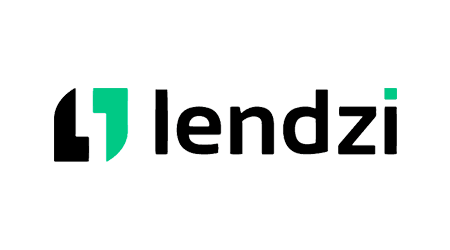-
Commitment to our readers
18 years
Helping you save money
Reviewed
by experts
Cited by
major publications
Finder maintains full editorial independence to ensure for our readers a fair assessment of the products, brands, and services we write about. That independence helps us maintain our reader's trust, which is what keeps you coming back to our site. We uphold a rigorous editorial process that ensures what we write and publish is fair, accurate, and trustworthy — and not influenced by how we make money.
We're committed to empowering our readers to make sound and often unfamiliar financial decisions.
We break down and digest information information about a topic, product, brand or service to help our readers find what they're looking for — whether that's saving money, getting better rewards or simply learning something new — and cover any questions you might not have even thought of yet. We do this by leading with empathy, leaning on plain and conversational language that speaks directly, without speaking down.
For many entrepreneurs, the idea of owning a grocery store is an attractive proposition. Grocery stores can generate cash flow anywhere between $19,500 and $1,200,000 a year, with an average cash flow of around $262,907.91 annually.
Here are the details on the revenue and cost to acquire a grocery store, plus how to purchase a grocery store in 2025. And, we include the best financing options for funding your business.
How much does a grocery store make?
The average grocery store* has an annual net cash flow of $262,907.91. This equates to roughly $21,908.99 a month over a span of a year. However, the profitability of your grocery store business comes down to its location, size, rent, wages and more.
Chart: Cash flow range of grocery stores currently listed for sale
How to buy a grocery store
- Find a grocery store for sale. You can find grocery stores for sale locally or online. Online you can search "grocery stores for sale near me" to find a list of business or broker websites that lists grocery stores for sale. It's important to also take note of your finances by knowing how much you have saved towards the purchase of a new business, as well as how much you may need to borrow to buy the business.
- Figure out what the business is worth. Use various valuation methods to get a general idea of the fair market value of the business you're trying to buy to make sure you're getting a good deal.
- Do your due diligence on owning and operating a grocery store. You'll want to weigh the pros and cons before taking the jump. Consider important factors that can affect the profitability of the business you're buying such as location, equipment, utilities and maintenance.
- Get a business loan and make an offer. Unless you have a lot of cash on hand, you'll need a business loan to finance the purchase of a grocery store. Check out our top picks of lenders for a grocery store business loan. Once you're ready to buy, contact and negotiate with the seller or agent of the business and finalize your offer. It may be helpful to have a lawyer look over any negotiations and final contracts.
Our top picks for a grocery store business loan
Cost of buying grocery stores
The average grocery store for sale costs $921,264.13*. Although prices vary widely depending on the location, the age of equipment and whether you're purchasing real estate as part of the deal. Many are listed well below the average price, and some are much higher than the average price, especially in urban locations.
With the average annual cash flow of a grocery store at $262,908, you can expect to make back your investment in roughly 3.50 years - this translates roughly to a 28.54% APY.
Chart: Cost of grocery stores available for sale
Cost, revenue and cash flow of a grocery store
The average price-to-cash flow (P/CF) ratio of a grocery store business is 3.50. The P/CF ratio measures how much cash a company generates relative to its price. You might've heard of the term price-to-earning ratio (P/E ratio) before, which is a more commonly known ratio. Essentially, this measures how much you are paying for each dollar of the company's earnings.
The average operating cash flow margin of a grocery store business is 0.10. The operating cash flow margin can be calculated by dividing operating cash flow by revenue. The operating cash flow margin reveals how effectively a company converts its sales to cash.
The average price-to-sales (P/S) ratio of a grocery store business is 279%. The P/S ratio measures the revenue of the business divided by the cost, which indicates the percentage of the revenue you are paying for the company. Typically the lower the percentage, the better. However, it's best to look at a company's P/S ratio in comparison to the P/S ratios of similar companies in the same industry.
Chart: Cost, revenue, and cash flow breakdown of the lowest priced grocery stores currently listed for sale
Chart: Cost, revenue, and cash flow breakdown of the highest priced grocery stores currently listed for sale
Steps to buying a grocery store
Buying this type of business involves finding one for sale, running the numbers and getting the right financing.
1. Search business listings
Start your search by Googling "grocery stores for sale near me." This brings up a list of business or broker websites with this type of business for sale in your area. From there, you can search listings and contact the seller or agent to get more information. Loopnet.com, Bizbuysell.com and us.businessesforsale.com are also good places to start your search.
2. Determine what the business is worth
Determining what a business is worth is both an art and a science. While this is by no means a complete list of the valuation methods available, you can get a general idea of the fair market value of a business with these calculations.
- Times revenue method. This is calculated by taking the revenue generated by a business over a certain period times a multiplier. The multiplier depends on the industry. For example, a retail company may be valued at 2.45x revenue, while a restaurant may be valued at 2.12x revenue.
- Liquidation value. This value is calculated by adding up everything a business owns, including real estate, equipment and inventory, and then subtracting the company's liabilities and debts. This can give you a rough estimate of what a business is worth, although it doesn't take into account future earnings.
- Discounted cash flow method. This calculation is based on projections of the future cash flows of a business, then discounts them to today based on inflation. It's a complex calculation best determined by using an NPV calculator.
Always consult with a qualified financial advisor if you have questions. In particular, look for a professional with the Accredited in Business Valuation (ABV) designation, which means they specialize in business valuation.
3. Do your due diligence
In addition to understanding what a particular business is worth, it's important to take into account the pros and cons before signing on the dotted line.
Here's a list of the top factors to consider:
- Location. The most successful businesses are located in areas with a lot of retail stores and traffic. However, consider the type of customers you foresee frequenting your establishment and their specific needs.
- Equipment. If your business requires special equipment, new equipment is more expensive upfront but can bolster your bottom line with reduced energy costs, less maintenance and more customers through the door.
- Competition. Consider the local competition and what sets your business offering apart.
- Utilities. If your business relies heavily on electricity, gas, water, trash and sewage services, you'll want to analyze the availability of these services and their costs carefully.
- Insurance. This is a must-have for any public-facing business. You'll want to make sure you have sufficient coverage to pay for a range of unforeseen circumstances.
- Maintenance. Who will do the repairs, mop the floors or answer the phone? While this business can be a part-time operation, no business is maintenance-free.
- Security. Depending on the location, your business may require extra security features, like cameras.
As with any large business purchase, be sure to educate yourself thoroughly about buying and running that type of business. Many online resources are available from experts who can offer in-depth guidance for your particular industry.
4. Get financing and make an offer
Business loans come in a wide range of flavors, but the most commonly used types for buying a new business or business assets include SBA loans, like the SBA 7(a), 504 and microloan lending programs, equipment loans or personal loans. These loans are offered by banks, credit unions and online lenders.
Online business loan marketplaces like Lendio, Lendzi and Businessloans.com can also be a good place to start your search. You'll want to compare multiple loan types across several lenders to find the best deal.
How to finance a grocery store
Grocery stores can be financed with these options:
- Personal finances. Cash from savings, an inheritance or from selling another business can be an ideal way to finance your purchase.
- SBA loan programs. The SBA 7(a) loan program could potentially be used to purchase this type of business. To qualify, you need to have a 700+ score, a minimum 20% down payment and financial statements from the business of interest.
- Personal loan. Because they don't have a time-in-business or revenue requirement, personal loans can be another way to finance your purchase, especially if you can get a competitive rate.
- Equipment loan. Equipment loans can sometimes be used to finance this type of business equipment, depending on the business's eligibility. But it may be trickier to get an equipment loan if your business is a mostly cash business or considered a restricted business.
Tip: If you're going for an SBA loan to purchase your business, try to find a preferred SBA lender to help push your application through faster.
Steps to get a loan for a grocery store
Here are the steps to apply for a business loan:
- Check your eligibility. This step involves checking your personal score and determining if you have any collateral to pledge if you choose a secured loan.
- Gather your documentation. These typically include bank statements, tax returns, the business's financial statements and a personal guarantee.
- Complete the application. Fill out the full application, upload documents or link your financial accounts and review the application for accuracy.
- Wait for approval and funding. Next, you need to wait for approval and funding. SBA loans can take weeks to months to process.
Where to buy a grocery store
We've found grocery stores publicly listed for sale in the following states. Updated daily.
The annual cash flow of the grocery stores range from $19,500 to $1,200,000.
Chart: Cash flow of grocery stores that are currently listed for sale
Sources
Compare business loan options for a grocery store
Compare and find the right business loan for you.
Compare other products
We currently don't have that product, but here are others to consider:
How we picked theseWhat is the Finder Score?
The Finder Score crunches 12+ types of business loans across 35+ lenders. It takes into account the product's interest rate, fees and features, as well as the type of loan eg investor, variable, fixed rate - this gives you a simple score out of 10.
To provide a Score, we compare like-for-like loans. So if you're comparing the best business loans for startups loans, you can see how each business loan stacks up against other business loans with the same borrower type, rate type and repayment type.
More guides on Finder
-
Large Business Loans Over $500K, $1M and More
Ever wonder what it takes to get a high-limit business loan? Find out which lenders go big.
-
Best Transportation and Trucking Business Loans in Florida
Compare top lenders offering loans in Florida to trucking and transportation businesses and the requirements to qualify.
-
Business loan calculator
Calculate the monthly payments and total costs of your business loan. Plus, learn how to reduce the total cost.
-
How to buy a business
Discover the essential steps and strategies for buying a business, from what business to buy to closing the deal.
-
6 Best Long-Term Business Loans of 2025
Compare the best long-term business loans for 2024.
-
BHG Financial Business Loans Review: Low Max Loan Amount
BHG Financial is a nonbank lender that offers investment, business debt consolidation, startup and healthcare-related loans to professionals. Borrow up to $500K with minimal requirements.
-
Reliant Funding small business loans review
Though fast, it’s not up front about rates and fees.
-
Bluevine Competitors and Alternatives
Like BlueVine invoice factoring and credit lines? Check out these six alternatives.
-
6 Best Small Business Lines of Credit (LOC) of 2025
Compare some of the top lenders offering business lines of credit and the pros and cons of each one.
-
What is a merchant cash advance?
Take advantage of this progressive form of flexible funding built for retailers.




